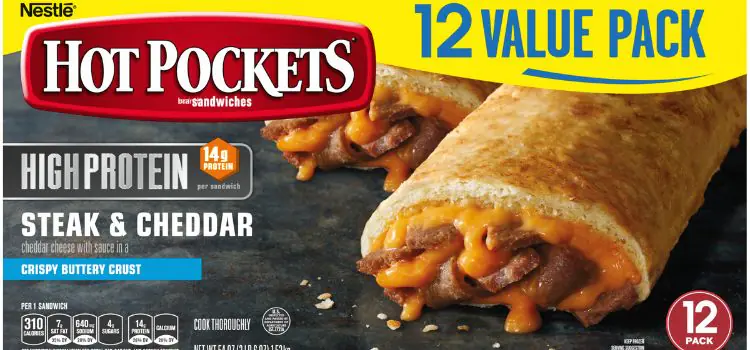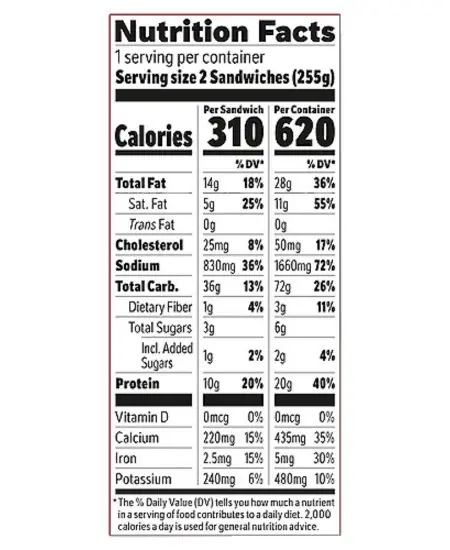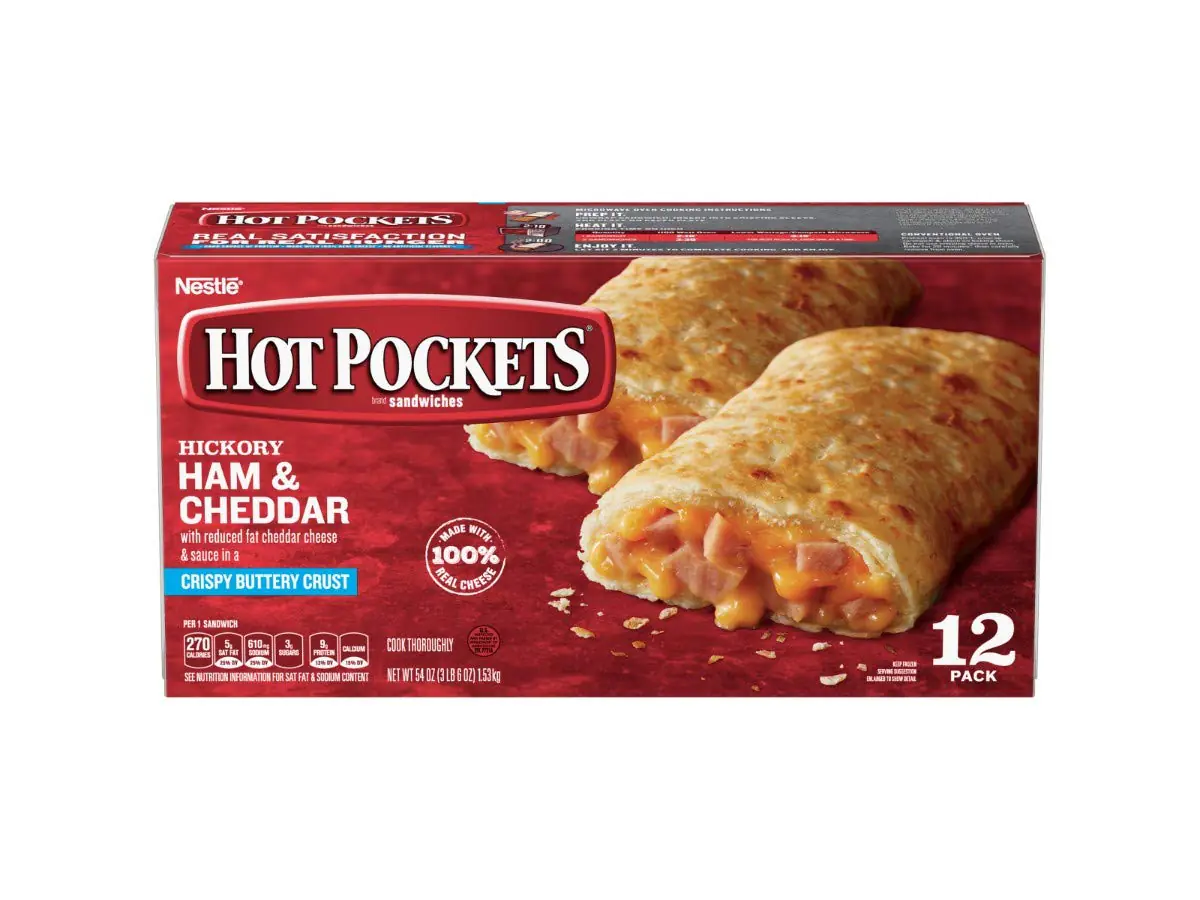Hot Pocket Pizza Nutrition Facts: Hot Pockets contain high levels of sodium, saturated fats, and added sugars, making them an unhealthy food option that can lead to various health issues, including heart disease, obesity, inflammation, kidney disease, osteoporosis, and cancer. Despite being a convenient and quick snack, it’s essential to consume Hot Pockets in moderation due to their poor nutritional value.
Hot Pockets are a popular choice for a quick and easy meal or snack, but understanding their nutritional value is crucial for making informed dietary choices. By examining the nutrition facts and ingredients of Hot Pocket pizza, individuals can make more informed decisions about whether to include them in their diet.
Let’s explore the key nutritional aspects of Hot Pocket pizza and how they can impact overall health and well-being.

Understanding Hot Pocket Pizza
What Is A Hot Pocket Pizza?
A Hot Pocket is a convenient, handheld snack made of a crust filled with flavorful ingredients such as cheese, meat, and sauce. The Hot Pocket Pizza variant specifically offers the beloved taste of pizza in a convenient and quick-to-prepare form.
Origin Of Hot Pocket Pizza
Hot Pockets were first introduced in 1983 by the brand Chef America, Inc. The idea behind Hot Pockets was to provide a quick, tasty, and easy-to-eat snack for people on the go. Over the years, Hot Pocket Pizza has become a popular choice for individuals seeking a convenient and satisfying meal.
Different Variants Of Hot Pocket Pizza
Hot Pocket Pizza comes in a variety of flavors to cater to different taste preferences. Some of the popular variants include Pepperoni Pizza, Four Cheese Pizza, and Sausage and Pepperoni Pizza. Each variant offers a unique combination of ingredients and flavors, providing consumers with options to suit their pizza cravings.
Hot Pocket Pizza Nutrition Facts

Hot Pocket Pizza is a convenient, quick meal that can satisfy cravings for pizza on-the-go. Understanding the nutrition facts of Hot Pocket Pizza is essential for making informed dietary choices. Let’s delve into the details of its calories and macronutrient breakdown, along with the micronutrients it provides and the health implications of its consumption.
Calories And Macronutrients
One serving of Hot Pocket Pizza typically contains approximately 320 – 360 calories, making it a substantial meal. The macronutrient breakdown consists of carbohydrates, proteins, and fats, which are crucial for providing energy and supporting various bodily functions.
Macronutrient Breakdown
Hot Pocket Pizza contains a balanced macronutrient profile, offering a moderate amount of carbohydrates to fuel the body, a significant source of protein for muscle maintenance and repair, and adequate fats for energy and nutrient absorption.
Caloric Value
The caloric value of Hot Pocket Pizza allows it to serve as a substantial meal, providing a satisfying amount of energy to support daily activities.
Key Micronutrients
Hot Pocket Pizza also offers essential micronutrients, including vitamins and minerals, which play a vital role in supporting overall health and well-being.
Vitamins And Minerals
Hot Pocket Pizza contains a range of vitamins and minerals, including vitamin A, calcium, iron, and potassium, which are important for various bodily functions such as vision, bone health, and electrolyte balance.
Key Micronutrient Sources In Hot Pocket Pizza
The micronutrient sources in Hot Pocket Pizza are derived from the ingredients used, such as fortified flour, cheese, and other components that contribute to its nutritional value.
Health Implications
While Hot Pocket Pizza can be a convenient option, it’s important to consider the potential health implications associated with its consumption.
Sodium Levels
Hot Pocket Pizza may contain high levels of sodium, which can impact blood pressure and cardiovascular health if consumed in excess.
Saturated Fats And Added Sugars Impact
The presence of saturated fats and added sugars in Hot Pocket Pizza can have implications for overall health, particularly in relation to cardiovascular disease and metabolic health.
Potential Health Risks Associated With Regular Consumption
Regular consumption of Hot Pocket Pizza, especially if it leads to excessive intake of sodium, saturated fats, and added sugars, could potentially contribute to health conditions such as heart disease, obesity, inflammation, and other related issues.
Ingredients Of Hot Pocket Pizza
Hot Pocket Pizza has become a popular choice for a quick and convenient meal. However, it’s important to understand the ingredients, processing methods, and nutritional values before incorporating them into your diet. In the following sections, we will delve into the primary components, processing, and health considerations and provide a comparative analysis of Hot Pocket Pizza ingredients with homemade pizza.
Primary Components
Hot Pocket Pizza ingredients play a significant role in its overall composition. It primarily consists of:
- Enriched flour (wheat flour, malted barley flour, niacin, iron, thiamine mononitrate, riboflavin, folic acid)
- Water
- Reduced fat mozzarella cheese (pasteurized part skim milk, nonfat milk, modified food starch, cultures, salt, vitamin A palmitate, enzymes)
- Pepperoni
- Various additional ingredients for flavor and preservation
Processing And Health Considerations
The ingredients of Hot Pocket Pizza undergo processing methods that involve various stages such as mixing, shaping, baking, and packaging. It’s important to note that while these products provide convenience, they often contain high levels of sodium, saturated fats, and added sugars, which can lead to health implications if consumed regularly. These considerations should be taken into account when considering Hot Pocket Pizza as part of a balanced diet.
Comparative Analysis With Homemade Pizza Ingredients
Comparing the ingredients of Hot Pocket Pizza with homemade pizza reveals potential differences in nutritional content and quality. Homemade pizza allows greater control over the types and amounts of ingredients used, enabling customization and healthier choices, whereas Hot Pocket Pizza may contain preservatives and additives for shelf stability, presenting a tradeoff between convenience and health considerations.
Tips For Healthy Eating With Hot Pocket Pizza
Eating healthy doesn’t have to mean giving up your favorite comfort foods like hot pocket pizza. With the right approach, you can still enjoy a hot pocket while making smart choices to maintain a balanced diet. Here are some tips for healthy eating with hot pocket pizza:
Portion Control
When enjoying a hot pocket pizza, portion control is key. Instead of indulging in multiple hot pockets in one sitting, opt for a single serving. This will help manage calorie intake and maintain a balanced diet. Pair your hot pocket with a side salad or some veggies to add fiber and essential nutrients to your meal.
Balancing Hot Pocket Pizza Within A Balanced Diet
Balancing your hot pocket pizza with a variety of other nutrient-rich foods is essential for a healthy diet. Ensure that your overall meal plan includes a mix of lean proteins, whole grains, fruits, and vegetables. Moderation is the key to balanced and healthy eating, so enjoy hot pockets as an occasional treat rather than a daily staple.
Healthy Alternatives
Consider healthy alternatives to traditional hot pocket pizza. You can opt for homemade versions using whole wheat crust, lean meats, and plenty of vegetables. This allows you to control the ingredients and reduce the sodium and saturated fat content. Additionally, exploring other convenient and healthy meal options can help you satisfy your cravings while nourishing your body in a better way.
Conclusion And Recommendations
When it comes to understanding the nutritional composition of Hot Pocket pizza, it’s crucial to take a balanced and informed approach. The consumption of these convenient snack options can have implications for one’s health due to their high levels of sodium, saturated fats, and added sugars. To make a well-informed decision about incorporating Hot Pocket pizza into your diet, it’s essential to consider healthy consumption tips, understand the nutritional facts, and make recommendations for moderation. Below you can find the conclusion and recommendations for optimizing your consumption of Hot Pocket pizza.
Final Thoughts
While Hot Pocket pizzas can be a convenient and quick meal option, their nutritional content should be taken into consideration. It’s important to be mindful of the sodium, saturated fats, and added sugars, and to consume these snacks in moderation.
Healthy Consumption Tips
- Opt for whole grain or healthier crust options, if available, to increase the fiber content.
- Pair your Hot Pocket pizza with a side salad or vegetables to add more nutrients to your meal.
- Monitor portion sizes and aim to have a balanced diet that includes a variety of food groups.
Recommendations For Moderation
- Limit the consumption of Hot Pocket pizza to a few times a week to minimize the intake of sodium and saturated fats.
- Read the nutrition labels and be aware of the serving size and the nutritional content of each Hot Pocket pizza.
- Consider preparing homemade pizza options with healthier ingredients for a more nutritious alternative.
Frequently Asked Questions Of Hot Pocket Pizza Nutrition Facts
How Many Calories Are In 1 Pizza Hot Pocket?
A Pepperoni Pizza Hot Pocket contains around 300 calories.
Is A Pizza Hot Pocket Healthy?
A pizza hot pocket is not considered healthy due to high levels of sodium, saturated fats, and added sugars. Regular consumption can lead to health issues like heart disease and obesity.
How Many Calories In A 4 Cheese Pizza Hot Pocket?
A 4-cheese pizza hot pocket contains around 310 calories, making it a relatively high-calorie snack.
What Are The Ingredients In A Hot Pocket Pizza?
The ingredients in a hot pocket pizza are enriched flour, water, reduced-fat mozzarella cheese, and pepperoni.
Conclusion
Hot Pockets contain high levels of sodium, saturated fats, and added sugars which should be consumed in moderation to avoid health implications. As part of a balanced diet, it’s important to be mindful of the nutritional content of processed foods and make informed choices for overall well-being.

As the author of the “Ultimate Pizza Guide: Recipes, Tips & Secrets Revealed,” I’m dedicated to sharing my love for pizza and empowering others to create delicious homemade pizzas with ease. Join me on a journey to uncover the secrets to perfecting your pizza game!



